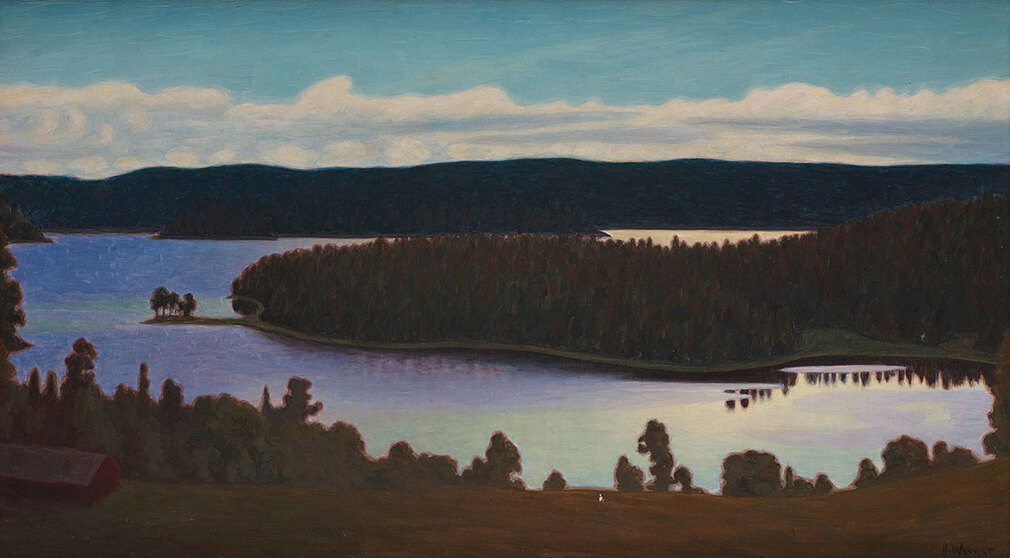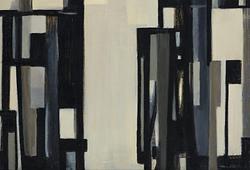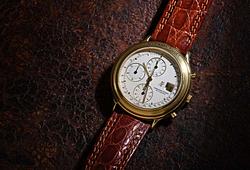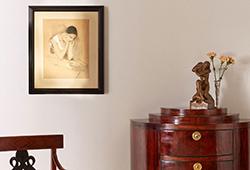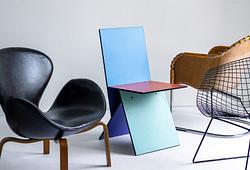Rackstadsgruppen – Nature mysticism, Japonism, and friendship on Important Spring Sale
Rackstadgruppen
Nature mysticism, Japonism, and friendship
The year was 1898 when the young artist couple Gustaf and Maja Fjæstad moved to the village of Rackstad in Värmland. At that time, Bröderna Erikssons Möbelverkstad was located there, and their production during the 1890s had brought them fame. One of the brothers, Christian, built the studio residence Oppstuhage in 1896, and two years later, when he moved to Stockholm, he rented it out to artists. This is where Gustaf and Maja Fjæstad lived when they arrived, and it became a residence for several young artists who followed Fjæstad. Over the years, a colony emerged, which we now call the Rackstad Colony. We are pleased to present three central painters from the colony in this auction: Gustaf Fjæstad, Björn Ahlgrensson, and Fritz Lindström.
During the 1890s, the artists of the Rackstad Colony belonged to the new generation of artists. They were strongly influenced by the revolutionary Artists' Association (Konstnärsförbundet), which had been formed by the previous generation in the 1880s. All three of the Rackstad painters in this auction attended the school of the Artists' Association and had Carl Larsson as their teacher. Gustaf Fjæstad perhaps had the strongest connection to the association, as he was not only a student but also an assistant to its members. He first assisted Carl Larsson in the work on the wall paintings of the National Museum and then, perhaps more importantly for Fjæstad's artistic development, Bruno Liljefors in the work on the Biological Museum.
The painting in Rackstad was defined by evocative landscape painting. The artists were interested in theosophy among other things, and their images were often symbolic. The visual language of the painters was also strongly influenced by Japonism, a cultural movement that emerged in Europe in the late 19th century. In 1854, Japan opened its borders to the world, which led to the spread of Japanese objects such as woodcuts and ceramics to the Western world. During the 1880s, the Japanese influences found their way into Swedish art. Swedish artists' first encounter with the Japanese visual world was in Paris, and many were deeply influenced, including Carl Larsson, who wrote in 1919, "as an artist, Japan is my homeland."
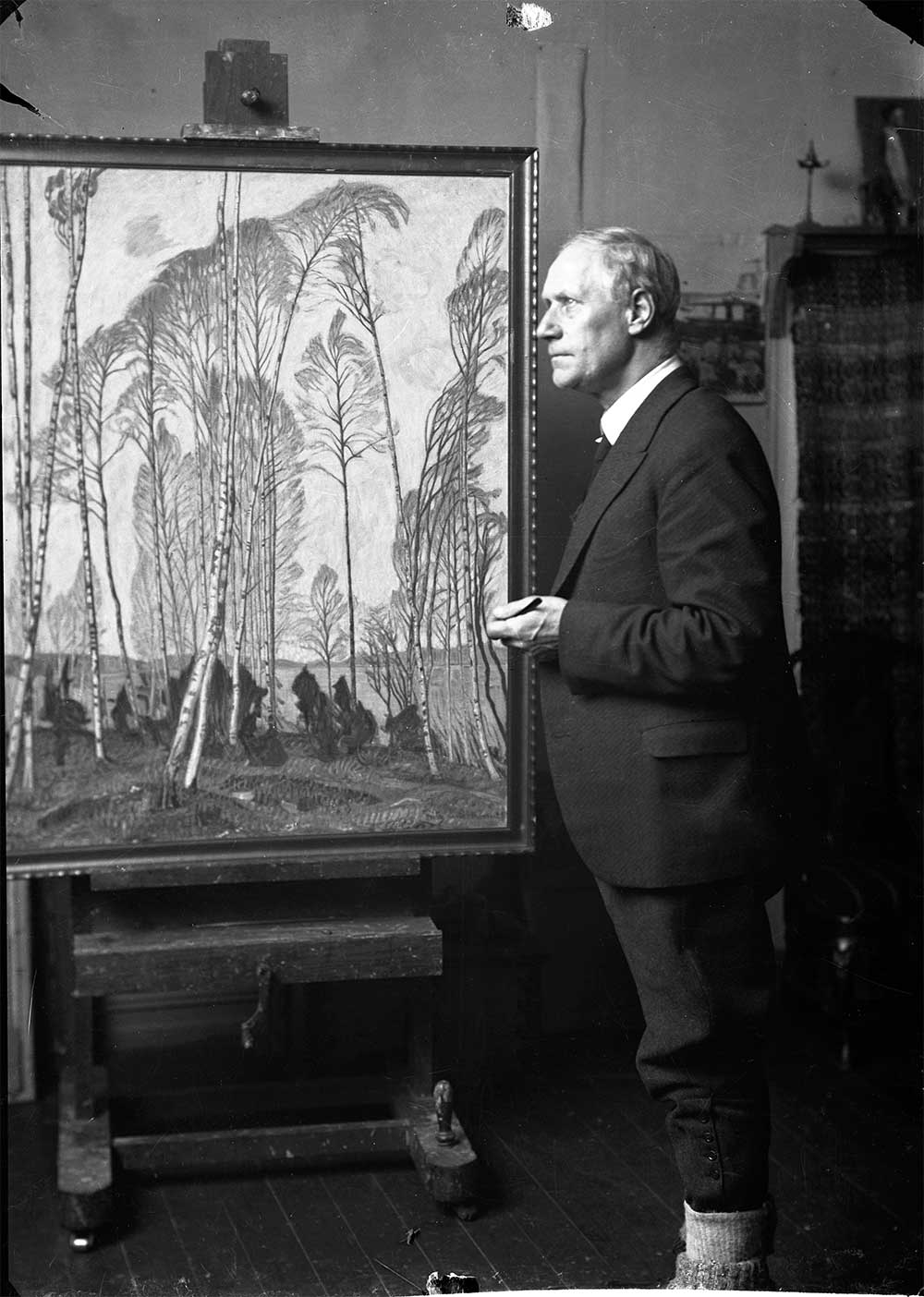
The artist Fritz Lindström in his studio in Rackstad, Arvika. January 16 1934. Photographer: Gunnar Ödvall, Arvika kommuns bildarkiv, nr 005882.
Gustaf Fjaestad Winter landscape with snow-covered pine trees.
Gustav Fjæstad was a very versatile artist, and as a painter, he is best known for his winter landscapes. In addition to his easel painting, he designed furniture and patterns for textile works, which were later woven into tapestries by his sisters. Among those who particularly appreciated Fjæstad's craftsmanship was the banker and art patron Ernest Thiel. He commissioned an entire furniture group and several tapestries for his private villa on Djurgården in Stockholm, today known as the Thiel Gallery, where they are still on display. Fjæstad also had some experience of public commissions, having assisted Bruno Liljefors in his youth with the large diorama in the Biological Museum in Stockholm.
During the 1890s, Fjæstad belonged to the Swedish artists' association called “Konstnärsförbundet” and was happy to participate in their exhibitions. His contributions were usually characterized by the national romantic ideals of the time: highly stylized winter landscapes depicted in atmospheric twilight light. After Fjæstad's permanent move to Värmland, where he became the leading figure in the artists' colony at Lake Racken, his opportunities for involvement in the association were limited, but he encouraged his fellow colony members, including Björn Ahlgrensson, Bror Lindh and Fritz Lindström, to enrol in the Konstnärsförbund school. Maja Hallén, his wife, had also been a student at the school for some time.
'Winter landscape with snow-covered pine trees' will be sold during Important Spring Sale. Estimate 500 000 - 600 000 SEK
To the artwork Explore the catalogue
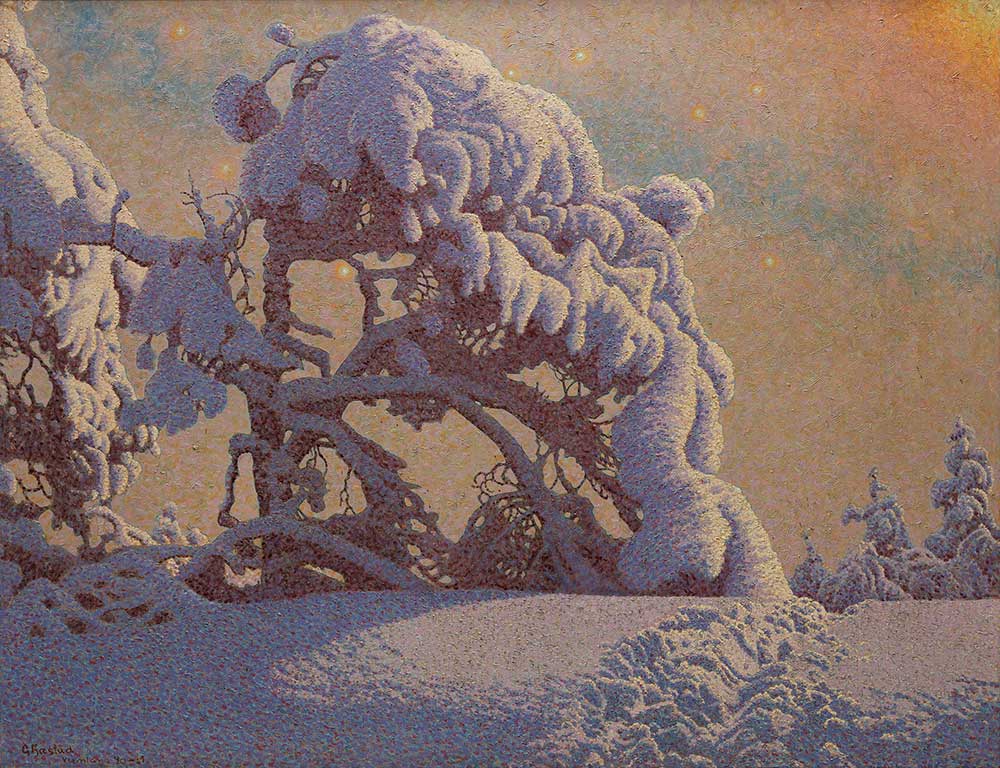
Björn Ahlgrensson By the piano
Get there immediately! I have discovered the most wonderful place in the world. Outside Arvika by a lake called Racken. What is Italy to that!
Gustaf Fjaestad supposedly said this when he met fellow artist Björn Ahlgrensson and his wife Elsa Lindström on Drottninggatan in Stockholm in the year 1900. The artist's invitation would prove to be a turning point for the newly married couple, whose life situation at the time was fraught with difficulties.
Ahlgrensson had been living in Stockholm since 1890 when he moved back to Sweden after living in Paris for much of his life. Through his father, himself a recognized decorative painter, Björn was employed as an apprentice in Carl Grabow's workshop. Here he met another apprentice, Fritz Lindström, who became a close friend and colleague.
Both Ahlgrensson and Lindström then managed to get in touch with the “Konstnärsförbundet” and were accepted as students in its school. Ahlgrensson painted diligently into the night and was constantly engaged in color experiments. Konstnärsförbundet saw promise in him and offered him a scholarship to go on an educational trip to Paris. The trip was not long, but he met the artists Ivan Aguéli and Olof Sager-Nelson, who introduced him to synthetism. When he returned to Stockholm, influenced mainly by Karl Nordström, he began to explore Nordic nature mysticism and his color palette became darker and duller. He received critical acclaim and was elected to the Swedish Artists' Association, but at the same time his financial situation was serious.
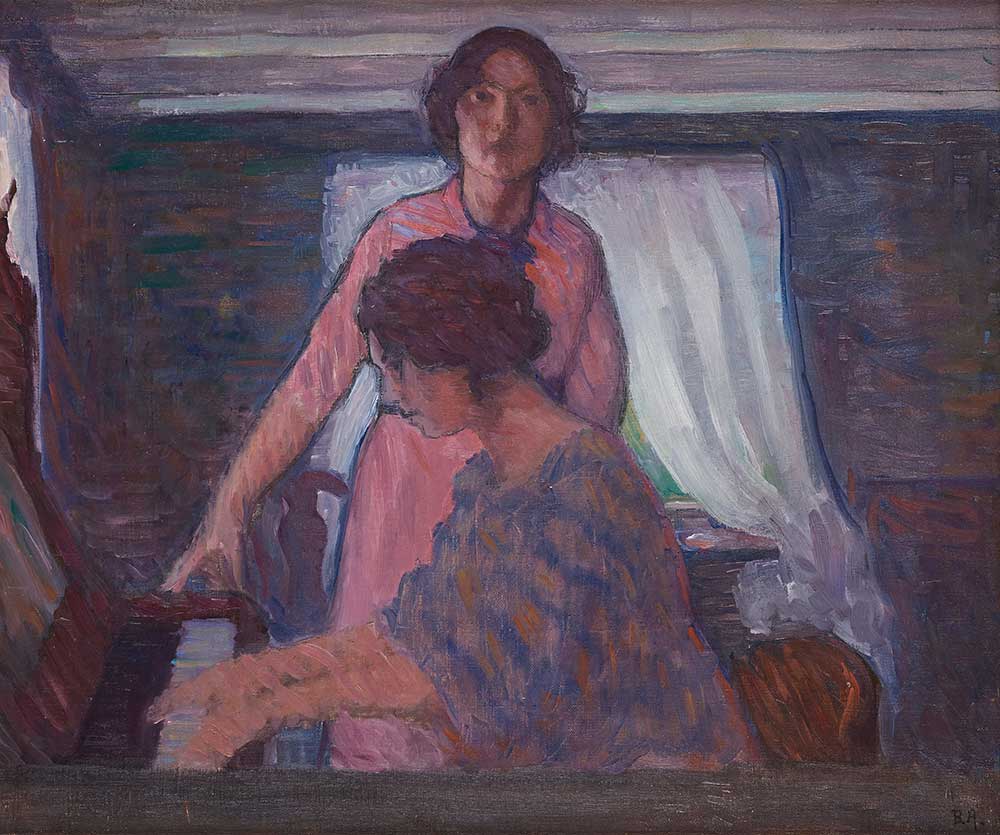
In 1900, Ahlgrensson married Fritz Lindström's sister Elsa and their first years together were characterized by poverty and a lack of prospects. They did not even have a stable home at this time. It was then that they came across the artist Gustaf Fjaestad on Drottninggatan. Two years earlier, he had settled in Racken, outside Arvika in Värmland, with his wife Maja, and when he heard about the newlyweds' difficulties, he offered them to move into sculptor Christian Eriksson's studio home Oppstuhage in the Värmland town.
Björn and Elsa took up Fjaestad's offer and moved into the studio apartment. Later, their friend and brother-in-law Fritz Lindström also moved in. Ahlgrensson began to explore the landscape of Värmland with the symbolist and atmospheric imagery so popular at the turn of the century. They soon moved out of the studio residence and moved to Perserud, and it is here that he would paint some of his most famous works in the first decade of the 20th century.
In addition to landscapes, Ahlgrensson was also a skilled interior painter and portraitist. The paintings from his home in Perserud were appreciated by Ernest Thiel, among others, who bought "Det snöar ute" from 1905. In the current auction, we see two female figures at a piano. While one woman sits and plays, the other stands beside her and looks straight at the viewer. We do not know the identities of these women, but the painting reflects an important aspect of the Rackstad colony: the community. One theory is that the women are Elsa Lindström and Maja Fjaestad. Gustaf and Maja Fjaestad spent a lot of time with Björn and Elsa, and Björn painted a famous portrait of Maja that is now in the Rackstad Museum's collection.
To be sold at Important Spring Sale. Estimate 150 000 - 175 000 SEK
To the work Explore catalogue
More works by Rackstadsgruppen

Vasarahinta
840 000 SEK
Lähtöhinta
500 000 - 600 000 SEK

Vasarahinta
Ei myyty
Lähtöhinta
80 000 - 100 000 SEK
Contact Specialist

Tukholma
Andreas Rydén
Varatoimitusjohtaja, Johtava asiantuntija, taide
+46 (0)728 58 71 39

Tukholma
Lena Rydén
Johtava taideasiantuntija, moderni- ja 1800-luvun taide
+46 (0)707 78 35 71
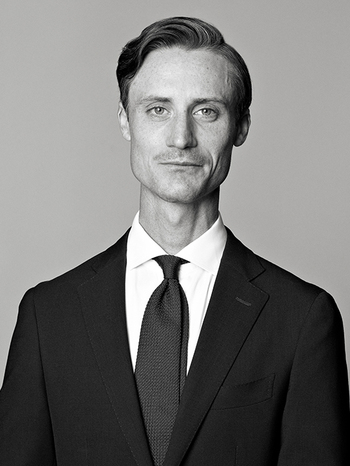
Tukholma
Mark Sjöberg
Asiantuntija taide & taidegrafiikka
+46 (0) 707 88 84 72
